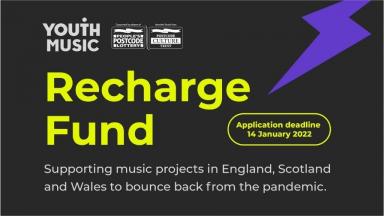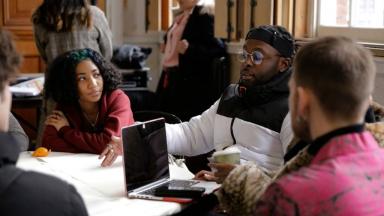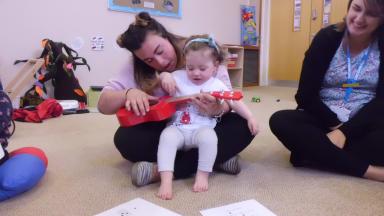Take a look at more resources that can support you with wellbeing, capability and capacity.
Wellbeing
Free guides and action plans from Mind, designed as a helpful starting point to support you and/or your team’s wellbeing at work. (Must register to download the free guide).
Mental Health First Aid England (MHFA)
MHFA offer expert guidance and training to support mental health in the workplace and beyond.
National Institute for health and Care Excellence (NICE)
NICE's formal guidance on promoting mental wellbeing through productive and healthy working conditions.
What Works Wellbeing guidance to help you plan, and carry out, evidence-informed programmes and activities to improve wellbeing in the workplace.
Capacity and capability
Youth Music – How to drive internal change to make your music business more inclusive
Ideas to help businesses drive change within their own organisation. This covers topics such as EDI, neurodiversity in the workplace, and building a diverse workforce.
Find out more about safeguarding, guidelines, grantholder requirements and links to other useful resources.
Arts Council England – Recruitment and Workforce Development Toolkit
The toolkit provides best practice downloadable resources, templates and guidance, covering four areas; Boards and leadership, Recruitment attracting, Recruitment, selecting and Retention workplace practices.
Arts Council England – Digital culture network
The Digital Culture Network provides free and practical support to the arts and culture sector. It helps you to explore and harness the benefits of technology to achieve your goals, find new ways to reach and engage audiences, develop sustainable business models, and maximise income opportunities.
Arts Council England – Making Digital Work
Making Digital Work is an easy-to-use toolkit for arts and culture organisations who wish to develop digital products and services. The toolkit takes you through the why, who, what and how of digital product development.
The Charity Digital Code of Practice is for professionals looking to get more strategic with digital. The Code can help you figure out the key actions that your charity needs to take to stay relevant and increase your impact, efficiency and sustainability.
Chartered Institute of Personnel and Development
Various resources to develop strategic HR and L&D for your organisation. Topics include: the HR role, resourcing and talent planning, reward strategy, leadership, HR analytics, L&D strategy, organisational development, change management, governance, corporate responsibility, and volunteering.
Julie’s Bicycle Creative Green Tools
Take the first step and measure your impacts with the CG Tools, developed by Julie’s Bicycle for the arts and culture industries.
Use this tool to calculate the carbon footprint of your website and find out of ways it can become more sustainable.
A practical tool to help charities and their trustees develop high standards of governance.
This page covers the operational, financial, legal and strategic processes that make an effective voluntary organisation.
Arts Marketing Association Culture Hive
Run by Arts Marketing Association, this is a free resource hub for non-members that brings the collective intelligence of arts, heritage and culture sectors together in one place
You may also like...
Recharge Fund
The Youth Music Recharge Fund offers grants of up to £90k (max £30k per year) to boost organisations in their post-covid recovery.
Improving capacity and capability
Do you need inspiration for your Youth Music Recharge Fund proposal? Our project community have shared some recent examples of how they’ve improved capacity and capability. We’ve added our own experiences to these, alongside some ideas about how you might measure progress.
Improving wellbeing
Improving the wellbeing of staff, freelancers, volunteers, and young people means embedding wellbeing in your day-to-day working practices. But what does that actually mean? In this article we share some real examples from two organisations and consider ways you could measure improvements in your practices.




